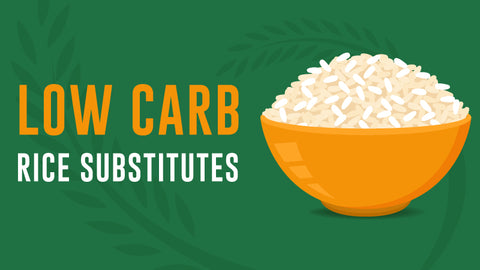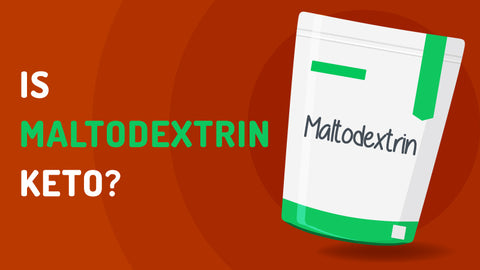Using Intermittent Fasting on a Keto Diet: Schedules and Benefits

on May 29, 2019
Can intermittent fasting help you lose weight?
Can it help prevent disease or combat aging?
And what kind of impact does it have on the ketogenic diet?
In this article, we will take a look at what intermittent fasting is, how to effectively add it to your current daily routine, the studies that help support the health benefits and why intermittent fasting and a low-carb keto diet compliment each other so well.
What is Intermittent Fasting?
Intermittent fasting is a behavioral pattern centered around specific eating windows. It consists of two periods — one of reduced or no caloric intake and a period of unrestricted eating.
During the fasting period of intermittent fasting, a person eats less than they normally would. This can be done by consuming fewer calories or abstaining from eating during this time frame altogether.
During this period of time when there is low glucose available your body will metabolize fatty acids increasing ketone levels which are used for energy.
Of course the other way to encourage your body to metabolize fat stores is to reduce your carb intake by following a low-carb diet such as the keto diet.
Typically on the keto diet you'll consume 50 grams of carbs or less.
Several scientific studies on intermittent fasting have shown promising results, with one drawing the conclusion that almost any type of intermittent fasting can result in some weight loss.
Other studies confirm that intermittent fasting reduces insulin and blood sugar levels, which is strongly correlated to a reduction in various chronic disease, including type 2 diabetes.
There is also on-going human research to try and determine whether intermittent fasting can help slow down neurodegenerative diseases such as alzheimer's and if Intermittent Fasting might also improve mental clarity.
Types of Intermittent Fasting: Ratios

Those following an intermittent fasting regimen define the different types of intermittent fasting based on the ratio of fasting to non-fasting time. These ratios can divide the eating cycle in dozens of different ways. Each ratio has benefits and drawbacks, so it may be necessary to try a few different approaches before you find one that suits your lifestyle.
Overall, the different types of intermittent fasting can be categorized into two overarching categories: whole-day fasting (WDF) and time-restricted feeding (TRF).
Whole-day fasting requires the fasting periods to be 24-hour increments. Whole-day fasting diets are more restrictive than simpler ratios such as 16:8.
The other category of intermittent fasting, time-restricted feeding, limits eating to certain hours of the day. A person may eat how they like during the non-fasting window, and abstain from food while fasting hours are in effect. This eating schedule is usually repeated, following the same schedule every day of the week.
Here are some of the most popular eating ratios of intermittent fasting:
Alternate Day Fasting (ADF)
ADF is defined as a 24-hour period of fasting, followed by a 24-hour period of unrestricted eating. This two-day cycle is repeated throughout the week.
5:2 Diets
Followers of the 5:2 approach go five days a week on a normal diet and two days per week fasting. During the fasting portion of the 5:2 approach, dieters may choose to abstain from eating completely or consume 500-600 calories per day.
You can choose the days of the week you wish to fast, allowing for more flexibility than the alternate day fasting technique. Most choose not to fast for consecutive days.
So for example, your fasting days may be on Monday (starting after dinner on Sunday) breaking fast Monday night and then again on Thursday (starting after dinner on Wednesday) breaking fast on Thursday night.
Eat, Stop, Eat Approach
The eat, stop, eat diet is what intermittent fasters call the method of fasting one day per week. An example schedule would be fasting from dinner one day to dinner the next day. A complete fast of 24 hours is what most eat, stop, eat dieters go for.
16:8
The 16:8 ratio consists of a 16 hour fast followed by 8 hours of regular diet. This can be as simple as skipping breakfast every day, eating a normal lunch and dinner, then fasting while you sleep. This ratio is a popular one because it’s easy to maintain this schedule.
A very common window for this style of intermittent fasting is to eat between noon and 8pm and fasting until noon the next day.
I personally work on an 11-6 schedule, it's a little bit tighter of a window, the reason I do this is because the longer you can fast for, generally the more effective it is. During a fasted state your insulin levels will continue to drop at a rapid rate for the first 24 hours, when insulin drops is when you start to see some of the benefits of fasting.
Ultimately, do what works for you - 16:8 is just a number. It works for a lot of people and if it works for you great, if you'd rather go 20:4 (or some other ratio) that's fantastic too.
OMAD
OMAD stands for one meal a day. It’s a highly-restrictive version of intermittent fasting where the fasting period lasts 23 hours per day, leaving only a one hour window to consume one meal.
People following OMAD are allowed to consume water and calorie-free drinks during fasting periods. For more information on the OMAD fasting plan combined with keto, check out our article here.
What Type of Intermittent Fasting Works Best for Keto?
The longer you fast, the quicker you will be able to get into ketosis. Fasting helps your body deplete it’s glycogen stores which is important when trying to switch from using glucose for energy to using ketones for energy.
When you are initially trying to get into ketosis you may elect to perform a multi-day fast such as Tim Ferris' protocol. It's a pretty intensive 3-day fast where you subside on black coffee or tea, exogenous ketones, BCAAs and fats such as coconut oil and mct oil.
Once you're in ketosis there is not a correct way to fast. For example following an Alternate Day Fasting regime AND the keto diet may be too restrictive so you may opt for a more lenient fast like a 16:8 schedule.
Combining any style of intermittent fasting is generally going to be beneficial for keto dieters. The reduction in both insulin and glucose levels can be helpful for those trying to stay or get into ketosis.
Benefits of Intermittent Fasting + Keto

Jumpstart Ketosis
As we briefly mentioned above an important overlap is the presence of ketones. Ketone bodies are released during periods of calorie restriction, as in intermittent fasting, or when carbohydrates are scarce, as in the keto diet.
These ketone bodies are created when the body metabolizes fat.
Though few studies have been done, it is believed that the combination of keto and intermittent fasting will get you into a ketosis state faster than either individually.
By speeding up the process with the introduction of a low-caloric environment, the body is thought to switch to a fat-based metabolic process faster than the traditional keto diet alone.
Reduction in Oxidative Stress
According to researcher Mark Mattson, senior investigator at the National Institute on Aging, an intermittent fasting approach to diet can reduce oxidative stress. This type of stress is defined by an imbalance between free radicals and antioxidants in the body and can lead to cellular tissue damage.
Oxidative stress is often caused by a range of factors including lack of sleep, exposure to alcohol, tobacco smoke, and environmental molds, as well as ionic radiation and air pollutants.
There is some evidence that the keto diet may also help reduce oxidative stress. The study looked at 18 healthy taekwondo contestants and found a reduction in oxidative stress caused by exercise.
Preservation of Learning and Memory Function
Intermittent fasting may improve memory longevity in a study that saw a 10-16 hour fasting period increase ketones in the bloodstream. These ketones have been shown to protect memory functions and slow neural diseases in the brain.
Effective for Weight Loss
Both intermittent fasting and the keto diet have been studied as potential weight loss tools.
Intermittent fasting, was shown to be effective method for losing weight. When compared to a diet that only restricts calories, intermittent fasting saw similar results in weight loss, body composition, and physiological levels such as blood glucose, cholesterol, and insulin levels.
Similarly, the keto diet has been also been shown to promote weight loss. One of the more interesting implications of the low-carb diet is that participants resting metabolism increased.
Lower Insulin Levels
After you eat, your insulin levels will rise. Depending on what macros you consume (carbohydrates, fats or protein) will determine how big of an insulin spike you will experience. If you're following a keto diet (or any other low carb high-fat diet) that spike will be moderate. If you just consumed a plate of pasta the spike will be massive. This study showed that reducing the number of carbs you eat may improve insulin resistance.
While fasting your insulin levels will also drop, the largest change occurs within the first 24 hours. Lowering insulin levels is important because it can help improve insulin sensitivity which is beneficial for whole host of reasons.
Lower Blood Pressure
This shouldn’t come as a surprise but many studies have shown that a low-carb diet can help reduce blood pressure.
Similarly while intermittent fasting, many subjects experience a decrease in blood pressure. According to Dr. Haitham Ahmed of the Cleveland Clinic, intermittent fasting lowers blood pressure as well as other major risks for heart disease.
While hesitant to directly link intermittent fasting to lower rates of cardiac diseases, it is a promising benefit that deserves more study.
No Increase in Appetite
Studies have shown that the keto diet actually slightly reduced appetite.
And according to a side-by-side study that compared intermittent fasting to a regular low-calorie diet, an intermittent fasting approach will not increase your appetite levels, despite subjects eating less throughout the week.
Fasting Induces Autophagy
Autophagy is the bodies natural process of dealing with damaged cells. As we age cells are damaged at an increased rate, things like stress, the environment and our diet (among other things) all play into the amount of cellular damage we're doing to our bodies on a daily basis.
Scientists have started to link this clearing of cells with disease prevention. Understanding how Autogaphy works is an incredible discovery and was awarded the Nobel Prize in 2016.
Potential Drawbacks to Intermittent Fasting on the Keto Diet
Like any dietary modification, there are drawbacks to consider before starting your own intermittent fasting regimen.
Can Further Exacerbate Electrolyte Imbalance
If you experienced the keto flu while starting the keto diet it may have been as a result of a lack of electrolytes. This occurs largely because as your insulin drops your kidneys will excrete water flushing both water and electrolytes.
Like, the keto diet, intermittent Fasting reduces insulin so this same issue can occur during your fast which can cause serious complications. A few of the side effects include nausea, dizziness, fatigue and cramping.
A few easy ways to combat this:
- Drink plenty of water. There is no magical number but we generally recommend consuming at least 1.5L while fasting. I drink closer to 2-3L, keep a reusable water bottle on hand.
- Pay attention to the color of your urine. Is it yellow? Drink more water
- Supplement with an electrolyte such as our keto electrolyte capsules
- Add salt to your water
- Add bone broth to your diet, it contains a high number of electrolytes
- Pay closer attention to your body while fasting, it will tell you what it needs.
Compensatory Overeating
Because eating habits are physiological and cultural, fasting for long periods of time may cause compensatory overeating.
While studies show that appetite levels don’t increase during intermittent fasting, you may still feel the urge to overeat during non-fasting times. This has shown to diminish many of the benefits accrued while maintaining a caloric deficiency.
How to Craft the Perfect Intermittent Fasting Schedule While Following a Keto Diet
Now that you understand the basics of the intermittent fasting model here is how to craft the fasting schedule that works best for your body.
-
Track Your Normal Eating Habits
It’s important to get a baseline on your natural eating habits before you start intermittent fasting. If you're already using a keto app like carb manager that's a great start.
The fasting approach to weight loss is a very flexible one, especially because you can customize the time of day or day of the week in which you fast. If you track what time you regularly consume meals, you can start to see where fasting is a natural fit in your current schedule.
It’s especially important to rate your level of hunger as you do this. Create your own food journal, making sure to jot down when you feel the most hungry and the least. Don’t forget to make a note of when you snack, too.
-
Do a Test Run
You don’t have to jump right into a highly-restrictive fasting cycle right away.
Start off by introducing a small period of fasting and see how it affects you. Does your mood change? Do you feel light headed? Make sure that you’ll be able to withstand fasting when incorporated into your regular schedule.
Next, choose a ratio you think fits best with your lifestyle and do a test run. Commit to fasting for a week and see how your body reacts.
-
Avoid the Binge
With fasting-based eating cycles, it can be very tempting to overeat during times of unrestricted eating. This is a mistake. Binge eating on the non-fasting portion of your cycle can undo most of the benefits associated with intermittent fasting, it becomes even more problematic if it consists of carbs and knocks you out of ketosis.
One suggestion that may help you avoid binge eating is to meal plan. -
Don’t Give Up
Altering your eating habits is one of the most difficult things to do because of eating’s unique cultural and social ties.
Eating, for the most part, is a group activity, so it’s important to not underestimate the power of your friends, family, and coworkers on your eating habits. Eating out on the keto diet, while sticking to a fasting routine is going to be difficult. Finding keto meals while on the go can be extremely challenging.
It's important to understand that you're going to fall off the wagon from time to time. If you indulge yourself with a cheat meal or fail to stick to your fasting routine that's OK. Just try and get back on track as quickly as possible.
Summary
Here are our takeaways on Intermittent fasting on the keto diet.
- The keto diet and intermittent fasting can be a powerful approach to weight loss.
- While studies are limited, there are early indicators that suggest IF and the keto diet offer a variety of health benefits beyond just weight loss. Including reducing oxidative stress, cognitive function, reduced insulin and blood pressure.
- Intermittent fasting can help you get into ketosis.
- If you're already following the keto diet and are considering fasting as well, start with a less restrictive fast and see how you handle it.














